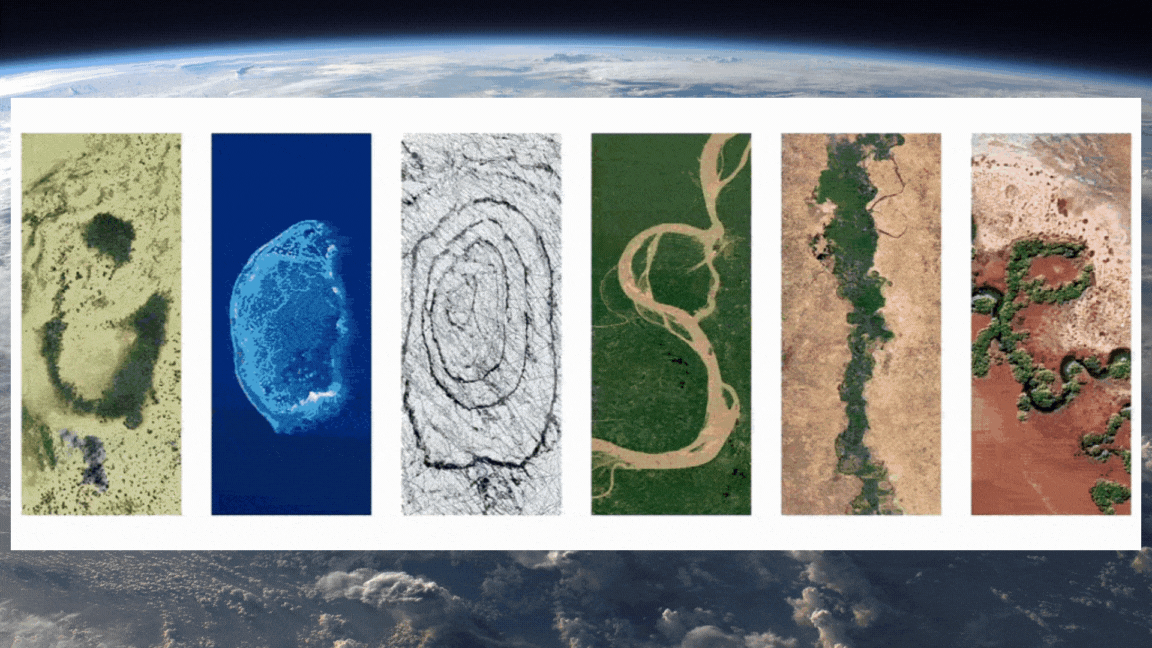The Earth Day 2024 Google doodle is a climate change reminder

- Oops!Something went wrong.Please try again later.
For Google today, the capital letter "G" represents far more than a "guh" sound, a measurement of gravitational force or a chill way to explain how many thousands of dollars someone has. That's because it's Earth Day, and in creative Google fashion, the company found a way for the first letter of its logo to signify one-seventh of a timely reminder — that the planet we live on is as delicate as it is robust, and it's up to policymakers, energy leaders and wildlife organizations to protect it.
In honor of celebrating our world this year, a Google doodle has replaced the company's usual sans-serif logo with aerial views of global surface features naturally shaped like letters. And, beyond that, each selected feature is attached to a story; among other things, these include tales of climate change and climate resilience, calls to action for animal welfare and examples of rebuilding broken land.
Related: Happy Earth Day 2024! NASA picks 6 new airborne missions to study our changing planet
Here's a walkthrough of that large letter "G," and the other six-sevenths of Google homage to Earth Day.
You have the leading "G," of course, a view of Turks and Caicos, which Google says is home to important areas of biodiversity and an endangered species of iguana: The rock iguana. There are thus conservation efforts underway in this region, aimed at things like taking care of natural resources in the area and making sure the rock iguana is allowed to thrive in the face of human-induced climate change.
Related: 10 devastating signs of climate change from space
The first of two "o's" in Google today is an azure scene from Mexico's Scorpion Reef National Park. It's the largest reef in the southern Gulf of Mexico and a UNESCO biosphere reserve, a place for scientists to test different ways to approach understanding how various ecosystems interact with one another. "The marine protected area serves as a refuge for complex coral and several endangered bird and turtle species," Google writes in an explanation of the lettering.
The second "o" takes you to a portal of concentric rings in Vatnajökull National Park in Iceland, which only earned its national park status in 2008 after "decades of advocacy," the explanation says. Vatnajökull National Park is a UNESCO World Heritage Site, which means it's considered to hold the best, or more "outstanding," to be specific, universal value across the world in terms of heritage and culture. It's Europe's largest glacier and is home to a "mix of volcanoes and glacial ice" that produce "rare landscapes and flora," Google says.
Rolling into the doodle's lowercase "g," this awfully familiar-seeming path comes from Jaú National Park in Brazil, another UNESCO World Heritage Site, and one that's actually found in the Amazon rainforest. "It protects a huge range of species, including the margay, jaguar, giant otter, and the Amazonian manatee," Google writes.
The final two letters in Google's name today, a chasm for an "l" and a winding green grove for an "e" hail from Great Green Wall, Nigeria and Pilbara Islands Nature Reserves, Australia, respectively. The Great Green Wall is associated with an African-led effort to restore land across the country that has been decimated by desertification, or the process by which a slice of land loses its vegetation over time. The effort is therefore centered around planting trees, for instance, to help the area teeter back toward the lush end of the spectrum. "This also provides the people and communities in the area with increased economic opportunities, food security, and climate resilience," Google writes.
Pilbara Islands, meanwhile, is one of 20 nature reserves in Australia, Google explains, that's meant to protect ecosystems and habitats of animals, including many that are endangered such as species of marine turtles, shorebirds, and seabirds.
Related Stories:
— Climate change has pushed Earth into 'uncharted territory': report
— 365 days of satellite images show Earth's seasons changing from space (video)
— James Webb Space Telescope documentary returns to IMAX theaters this week for Earth Day
It is poignant that, in a video released by Google outlining the process by which the doodle was created, these seven snapshots of Earth live among a ton more. Of course, this illustrates how many of our planet's surface features weirdly resemble alphabet soup, but the fact that this such Earthly alphabet soup even exists also demonstrates how many surface features there are on Earth. Only then would there be, probability-wise, enough to have a bucket from which to select the best seven to feature on the search engine's site.
We have gone through some quite visceral climate repercussions as of late, including the hottest year on record and the era of being engulfed in wildfire smoke — both of which are direct consequences of human activities like burning coal — so this Earth Day feels a little more cutting. It's remarkable that we live on a luscious blue orb, and both stressful and special that we have only one.

